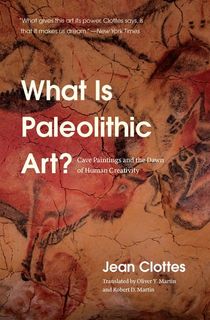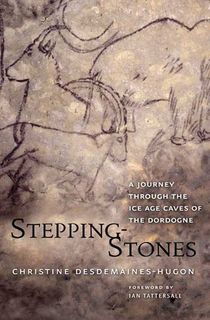Pondering the prehistoric existence of humans on this planet can be a challenging exercise. Due to the absence of documented data, particularly writing, much of humanity's earliest achievements are lost to the abyss of silent ages past.
The rise of our species, Homo sapiens, took place about 300,000 years ago. In contrast, some of the oldest known pieces of writing, such as those from ancient Mesopotamia, date back to just 5,500 years ago. Everything we can deduce about the human race that falls between these two points in time is the fruit of archaeology, research, and imagination. By unearthing the living areas and artifacts of different prehistoric societies, scholars have been able to pull back the curtain on these time periods, offering us a unique glimpse into the distant past of our ancestors.
A number of studies and popular books have been published exploring the lifestyles of the primeval human being. We've waded through a slew of them, panning for the most informative and engrossing among them, and we struck literary gold.

What Is Paleolithic Art?
Have you ever considered cave paintings to be a high art form that grapples with the expression of the human condition? Well, perhaps you should. This is certainly the sense one gains in Jean Clottes' What Is Paleolithic Art? Clottes goes through a range of manmade visual representations dating back to the Stone Age, which began roughly 2.6 million years ago. Along the way, the author offers a wide scope of interpretations on the meaning behind such prehistoric works, framing them as early snapshots into the creativity of the human spirit.
Related: 10 Fascinating Cave Paintings That Illuminate the Prehistoric World

Stepping-Stones
Regarding the famous cave drawings in Dordogne, France, Pablo Picasso purportedly said, “Since Lascaux, we have invented nothing.” That's high praise coming from one of the most revered artists of the 20th century, and a statement worth exploring further.
Christine Desdemaines-Hugon has, like Clottes, spent many a year examining such ancient artworks, particularly focusing on those in the Dordogne vicinity. Stepping-Stones: A Journey through the Ice Age Caves of Dordogne is, by and large, the offspring of her decades-long research. Desdemaines-Hugon brings the cave paintings into dialogue with modern creative genres and uses their similarities as a point of reference. In looking closely at a handful of sites, she shows how these images can provide a glimpse into the Paleolithic customs of the people who once lived there.
Related: 10 Intriguing Art History Books

Bronze Age Military Equipment
During the various prehistoric eras, societies developed new technologies at different points in time. The Bronze Age began a bit before 3000 B.C.E. in places like China and Greece, while Britain would not see the dawn of this era until circa 1900 B.C.E. Everything from jewelry to tools to weapons was made from the eponymous metal during the Bronze Age. Dan Howard’s book takes readers for a ride through the conflicting prehistory of nations like Sumer, Babylonia, Egypt, and others, focusing on the warfare and bronze weapons used by the ancient peoples who lived there.

The Origin of Humankind
Richard Leakey is a seasoned paleoanthropologist and author, whose passion for discovery runs deep in his blood. The son of archaeologists and the grandson of missionaries, Leakey was born in Kenya. He's devoted his professional career to researching the origins of the human race and advocating for environmental care. Among his bibliography of stimulating books, The Origin of Humankind often takes on a personal tone, exploring not only the biological and social development of humanity, but also Leakey’s friendships and rivalries with fellow fossil-hunters.
Related: 8 Fascinating Ancient History Books Whose Subjects Span the Globe

Across Atlantic Ice
No one knows for sure who the first people to find their way to North America were—nor how they got there. But one of the popular theories surmises that hunters came across a bygone land bridge (now submerged beneath the Bering Strait) in pursuit of game until they found themselves in the New World. The Clovis culture, made up of some of these earliest pre-Columbian settlers and survivors, relied on stone tools and sharp weapons. In Across Atlantic Ice: The Origin of America's Clovis Culture, the authors contend that the first “Americans” arrived on the continent earlier than scholars once believed—and that the Clovis people can be traced back to the Solutreans, who inhabited parts of France and Spain some 20,000 years ago.

Olmecs: A Captivating Guide to the Earliest Known Major Ancient Civilization in Mexico
What archaeologists today refer to as the Olmec civilization of Mesoamerica, an ancient region encompassing parts of Mexico and Central America, was a society that dawned around 1200 B.C.E. and would lead to the rise of distinct indigenous cultures such as the Maya. Their artisans were adept in the making and shaping of jade, rubber, pottery, and mirrors. The Olmecs also eventually formed their own writing and numbering system. This book gives readers a glimpse into the life and art of this little-known ancient culture and its subsequent influence on other Mesoamerican civilizations.
Related: Historical and Cultural Marvels Abounded in the Americas’ Pre-Columbian Cites

Dark Emu
No one has dwelled on Australia as long as the continent's Aboriginal peoples have. While estimates vary, Aboriginal Australians likely arrived on the landmass at least 50,000 years ago. Dark Emu uproots the long-running and inaccurate stigma that sees these indigenous people as rudimentary hunter-gatherers—a lie that was weaponized to justify dispossession—and sheds light on their diverse and complex agricultural societies.




